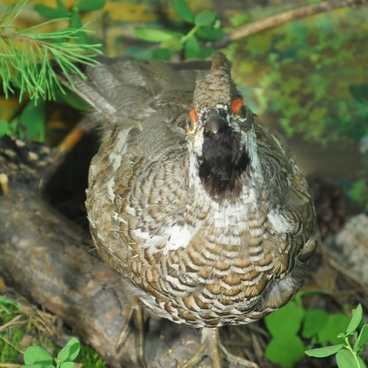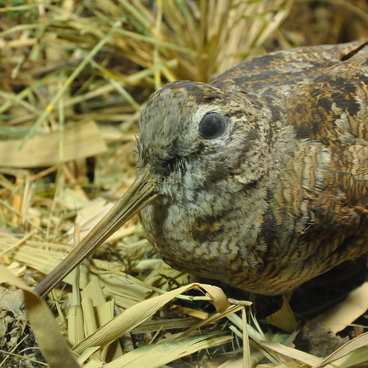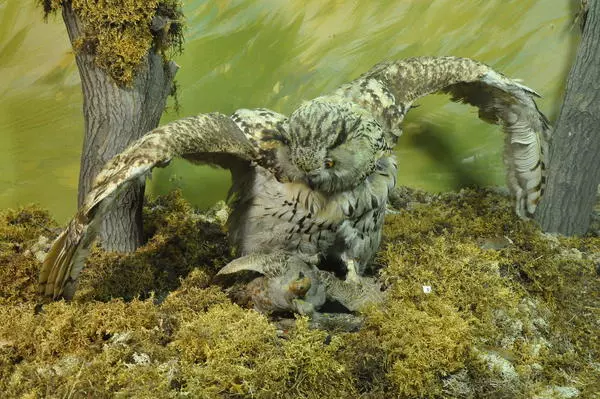Reeve is classified into Charadriiformes order. Its Latin name is Philomachus pugnax. It is a rather slender and long legged wader. The males’ nuptial plumage makes them unmistakably recognizable because of the gaudy feathers on the neck and the head. Their coloration is widely diverse - from white to fire-red and charcoal-black. You can hardly come across two similarly colored birds but the coloration is an ancestral trait. In other seasons, the only thing that can help you tell males from females is the larger size for the former. Just like females, they have very modest brownish plumage during that period.
Reeve is virtually noiseless bird. Only when breeding a female may produce some quiet sounds reminiscent to short hushed quacks. Males in the middle of the mating display may make similar sounds but on a rare occasion.
Reeves have their both mating displays and spring en-route stops in the breeding regions or in the vicinity thereof. Normally those are grassy swamps, meadows, tundra. The reeves mating rituals remind of some kind of a mockup tournament where ruffled collar males are hopping, bowing, squatting, flapping wings, jumped on each other. At times, the ritual comes to a halt with the participants frozen in comical positions, and then, normally when females appear, it starts over again.
Unlike most waders the reeves diet is strictly defined by a season. In summer time, they eat mostly aquatic and ground insects and their maggots: beetles, flies, mosquitoes, water bugs etc. The birds would not say no to shellfish and crustaceans. In winter, they switch to plant-based diet: seeds of grass and aquatic plants. In migrating to warmer places for winter, the reeves are capable of flying up to 30,000 kilometers.
In the breeding period, the reeves and their hatchlings become target to many birds of prey including large species of seagulls and ravens. Polar and red foxes are their worst enemies on the ground. The crowded mating grounds are a juicy target where death toll tends to grow, because aroused birds often drop some of their guards.
The reeve’s average timespan is 4.4 years. The oldest registered reeve – 13 years 11 months old – lived in Finland.
Reeve is virtually noiseless bird. Only when breeding a female may produce some quiet sounds reminiscent to short hushed quacks. Males in the middle of the mating display may make similar sounds but on a rare occasion.
Reeves have their both mating displays and spring en-route stops in the breeding regions or in the vicinity thereof. Normally those are grassy swamps, meadows, tundra. The reeves mating rituals remind of some kind of a mockup tournament where ruffled collar males are hopping, bowing, squatting, flapping wings, jumped on each other. At times, the ritual comes to a halt with the participants frozen in comical positions, and then, normally when females appear, it starts over again.
Unlike most waders the reeves diet is strictly defined by a season. In summer time, they eat mostly aquatic and ground insects and their maggots: beetles, flies, mosquitoes, water bugs etc. The birds would not say no to shellfish and crustaceans. In winter, they switch to plant-based diet: seeds of grass and aquatic plants. In migrating to warmer places for winter, the reeves are capable of flying up to 30,000 kilometers.
In the breeding period, the reeves and their hatchlings become target to many birds of prey including large species of seagulls and ravens. Polar and red foxes are their worst enemies on the ground. The crowded mating grounds are a juicy target where death toll tends to grow, because aroused birds often drop some of their guards.
The reeve’s average timespan is 4.4 years. The oldest registered reeve – 13 years 11 months old – lived in Finland.


